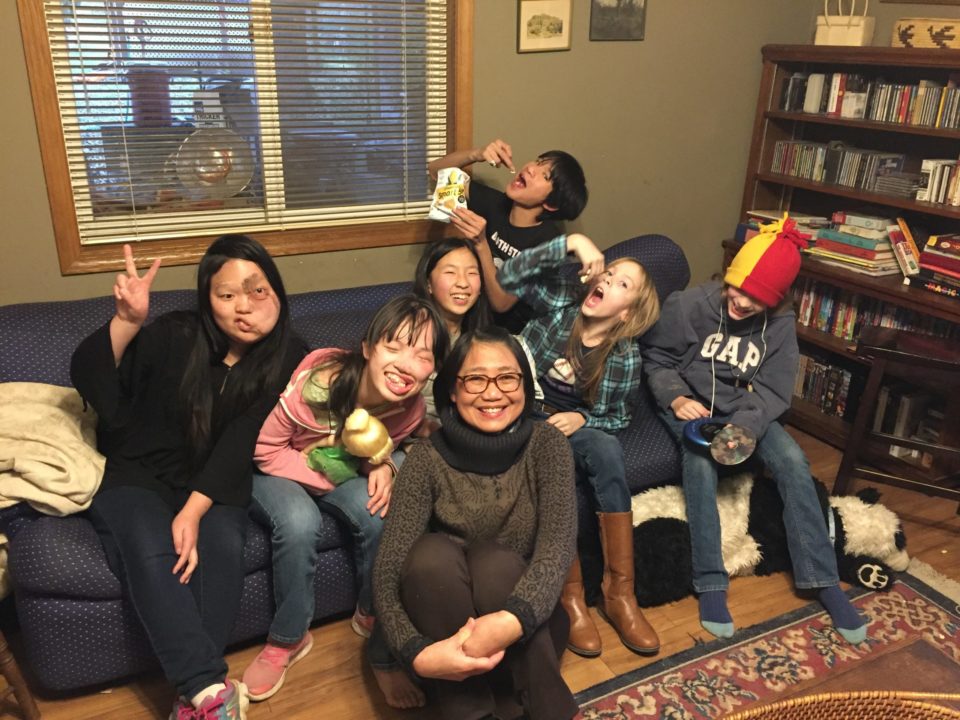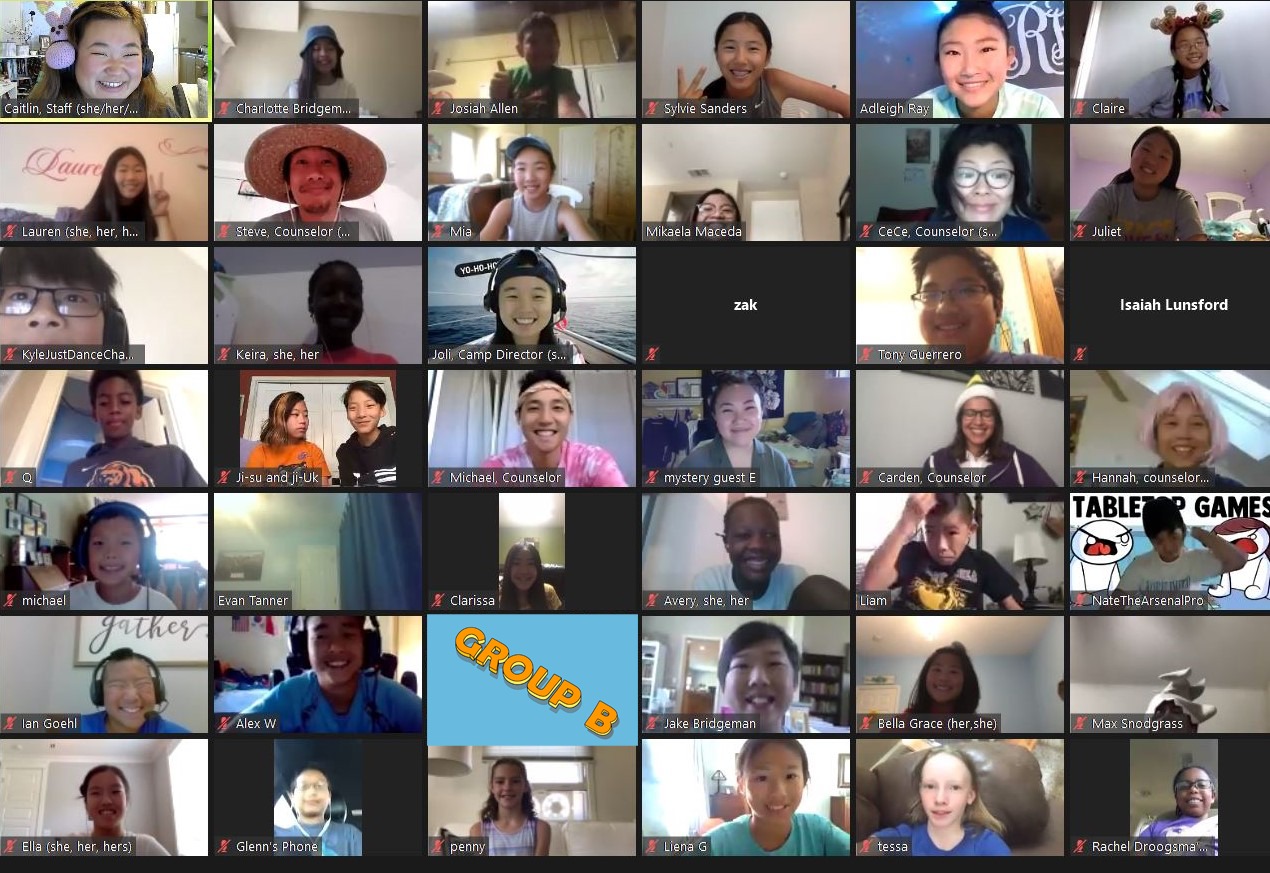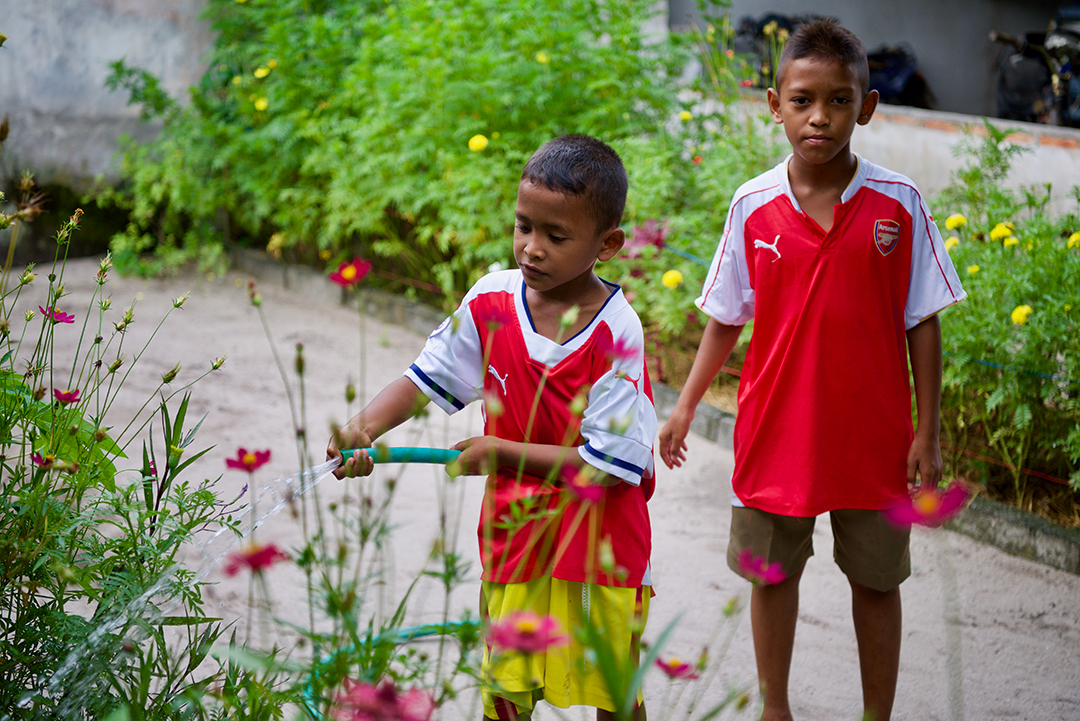When a documentary filmmaker approached Elizabeth and Jud Curry about filming their lives as a multiracial, international adoptive family of 12, they hesitated. But then their 9-year-old daughter, recently adopted from China, asked a question that so surprised them, they decided to say yes — welcoming viewers inside their lives and home.
This story is part one in a series. Click here to read part two, “Four Things to Consider When Sharing Your Family’s Adoption Story.”
I just wanted to wash the dishes.
It was after lunch, all the children were having quiet time somewhere around the house, and I was cleaning up the kitchen after a full morning of homeschooling followed by lunch for ten.
Actually, since I was actually washing the dishes, I should clarify. I just wanted to wash the dishes without a cameraman following my every move, asking me questions the entire time. If I am truthful about this, I must admit that before I had finished washing the dishes, I snapped and suggested he stop filming, stop asking questions, and go take a break somewhere else.
That scene didn’t make it into the documentary.
Since I don’t actually enjoy being followed around by cameras, it may be surprising that I agreed to my family being the subject of a documentary in the first place. In order to understand how I found myself snapping at a cameraman, I should back up a bit.

Our First Older Child Adoption
A year before we were approached about doing a documentary, we had come home from China having just adopted our daughter, Hayden. Hayden was our tenth child, and while she was our third adopted child, she was the first older child we had adopted. Hayden was 9 at the time. It was an eventful year with figuring out who this new daughter was, dealing with surgeries and recoveries, and wrestling with my own painfully slow attachment process.
It was also an eventful year as we began to see our daughter come out of her shell. Slowly, she became more comfortable with us and began to feel a part of the family. One particularly memorable event happened just a few months after we returned from China, when we were all at the beach on Lake Michigan near our home. We had spent a good chunk of the afternoon playing on the beach and had loaded up all of our stuff and were walking across the beach to head home.
Could sharing our story help another child find the parents they need and deserve? We asked Hayden about it. Would she be willing to share part of her story? She agreed and we (hesitantly) said yes.
My husband and I happened to see a family we were friends with and stopped to chat for a moment. After we said goodbye, Hayden managed to ask us, in her still developing English, who those people were. We did our best to explain, saying that the adults were the mommy and daddy of the children who were standing with them.
It was as if a lightbulb went on in Hayden’s head. They were a mommy and daddy, too?
She then pointed to other families, asking if they were also mommies and daddies. We said yes. There was a pause, and with a great deal of wonder in her voice, she then said, “So many mommies, so many daddies,” and continued to look around her, obviously seeing with new eyes a beach filled with families.
It never occurred to us that she wouldn’t immediately know that each of those groups of people would be families; that each group of children had their own set of parents. But Hayden had spent a significant portion of her life in orphanages or foster homes, and we realized as we stopped to think about it, mommies and daddies in those situations were a very limited commodity.

You could almost see her thinking that if there were so many parents in the world, why was she just finding this out now? The idea that a child could have no idea that other children grow up with parents stayed with me.
That was probably also a key element in helping us decide to say yes when we were approached by MayMay Tchao about allowing her to make a documentary about Hayden and our family. Could sharing our story help another child find the parents they need and deserve? We asked Hayden about it. Would she be willing to share part of her story? She agreed and we (hesitantly) said yes.
A Loving, Normal Family
Things I didn’t know about making documentaries when we began:
1. It takes a long time with a lot of film needed.
2. Nothing in a documentary “just happens.” My view of any “reality” TV show will now be significantly changed.
3. I am the world’s worst documentary subject. I also did a lot of worrying. Should we be doing this? (Not all of our children were feeling participatory about it, and May was extremely gracious about working around them.) Were we oversharing? Hayden’s story was her own; it did not belong to us. Was this the right thing to do? How would it seem to others? One of my goals was to show that adopting a child, particularly one with seemingly significant special needs, was something that ordinary people could do. Would we come across as ordinary? I didn’t want to be portrayed as something special.

Fast forward quite a few years to when May brought the near final cut of the documentary (along with many snacks) to our house for us to watch. I felt more than a little trepidation, though I trusted May’s judgement. We’d had many years during the course of filming to discuss adoption and its positive and negative sides — about trauma and loss and how easy it is to make a child feel burdened with gratefulness.
I ended up loving the film she made. I hope it shows a loving, normal family who just happens to have been created in unusual ways.
We have no super powers except to be willing to entertain the idea that maybe there is a little bit more room at the table. I’m glad we decided to agree, though I’m equally glad that it is finished. And I do hope that others will see that older children and special needs that might at first glance seem totally unmanageable really are not so big a deal.
Elizabeth Curry | Adoptive Mom






THANK YOU!
Is it possible to watch the film in Europe?
Hi Julia, “Hayden and Her Family” is available to view here, at Vimeo On Demand whereever you are!